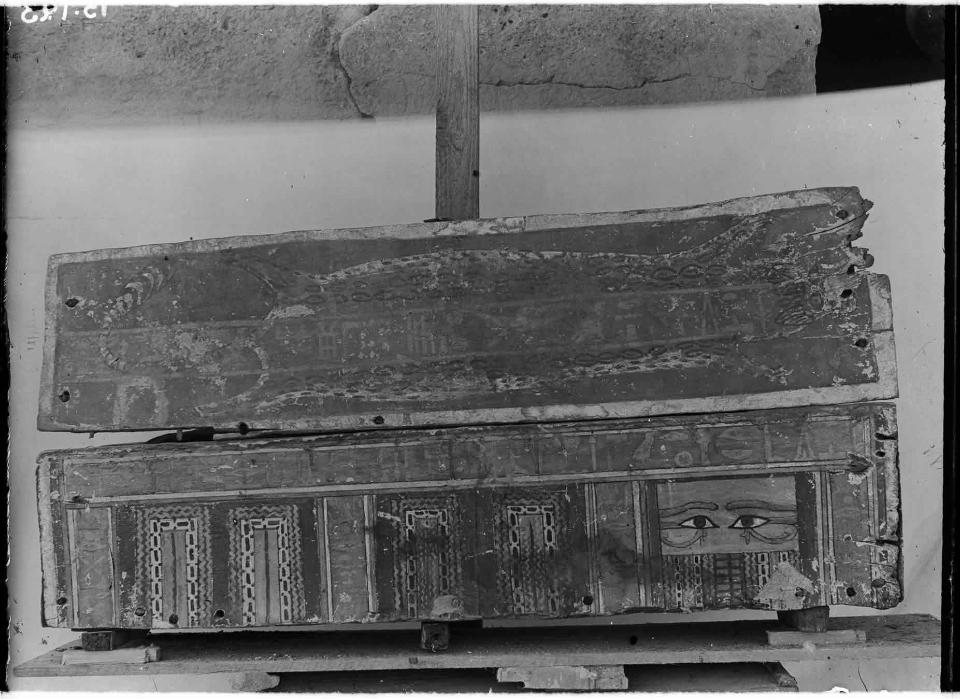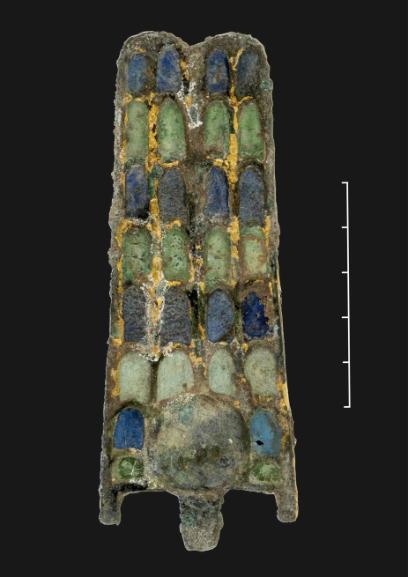Raw Materials
Raw materials left over from food production were used to create objects – little was left to waste. Other animals were hunted specifically for their feathers, ivory or skins, rather than for food. Material derived from the ostrich, elephant, hippopotamus and leopard were particularly prized.
Ceramic vessel imitating an ostrich egg. Egypt; Early Dynastic Period (3150-2686bc). E.4094
Double ostrich feather and sun disk headdress from a statue of a god or king. Made of bronze, it is inlayed with faience and/or glass in the colours of turquoise and lapis lazuli, and gilded. Meroë, Sudan; Meroitic Period (542bc-350ad). E.1569
Double ostrich feather and sun disk headdress from a wooden statue. Egypt; Late Period (664-332bc). E.7125
Animal skins rarely survive in the archaeological record, but were often depicted on artefacts. This coffin from the Middle Kingdom cemetery of Beni Hassan (Egypt) has a representation of a leopard hide painted on the top. Photograph taken during the 1904-6 excavations of John Garstang. JG/B/193

Ceramic vase with painted decoration of an animal skin on a pole. Egypt; Naqada II Period (3600-3200bc). E.6900
5,000 year old bracelet made up of slate and ivory plaquettes, from the tomb of Queen Neith-hotep. Naqada, Egypt; Early Dynastic Period (3100-3150bc). E.5199
-730x645.jpg)
To learn more about Neith-hotep see our blog post: Neith-hotep of Naqada - Queen Consort or First Female Pharaoh?
Inscribed ivory label, bearing the name of King Hor-Aha. Naqada, Egypt; Early Dynastic Period (3100-3150bc). E.5116
Fragment of ivory clapper (percussion instrument). Abydos, Egypt; New Kingdom (1550-1069bc). E.7027
Previous: Food and Transportation
Next: Decorative Features
